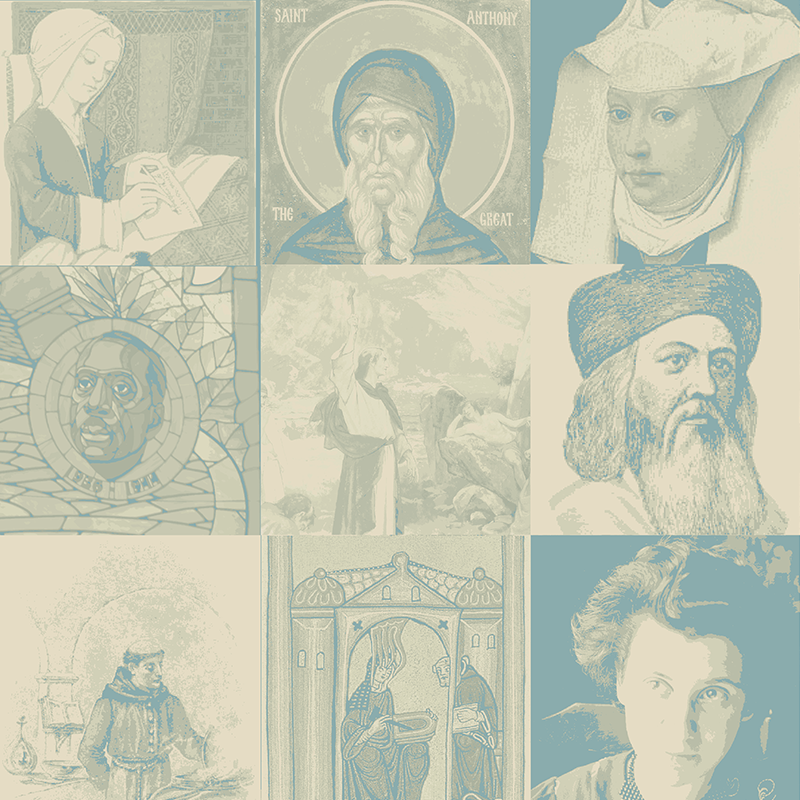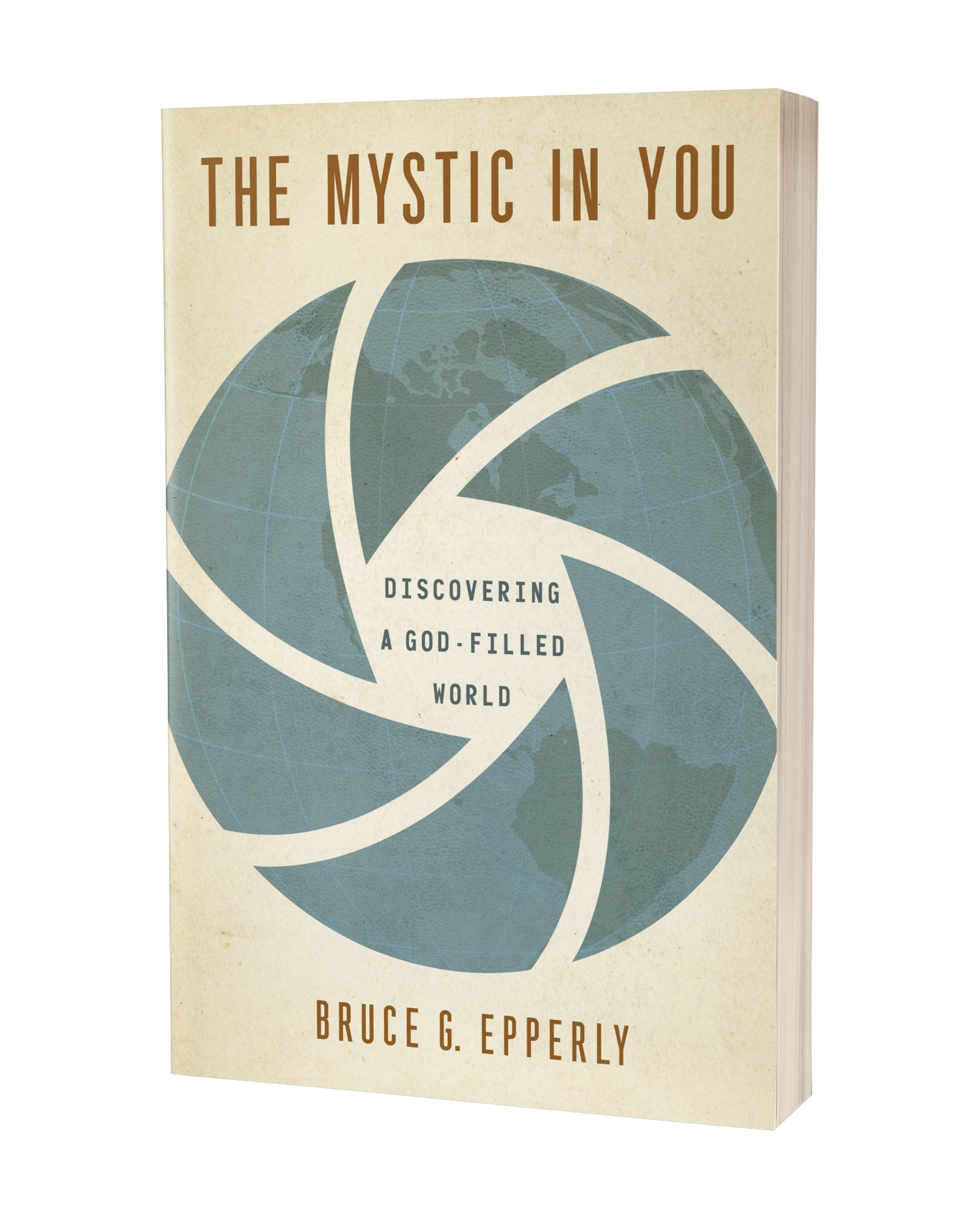
Part 2 of a three-part series by Bruce Epperly, author of The Mystic in You.

"We are all mystics,” says German theologian Dorothee Sölle. We have all been touched by God and constantly receive divine inspiration, even if we are unaware of it. One of the missions of my book The Mystic in You is to demystify mysticism. I attempt to do that by telling the stories of saints and mystics as an inspiration for us to discover the unique mystical call in ourselves. Mystics do not belong to another order of reality; they are simply people who have encountered God in life-transforming ways. Mystics choose to experience God’s presence in the ordinary as well as extraordinary moments of life, and this openness has changed their lives and the world.
Mystics and saints seldom set out to become spiritual giants. Very few mystics receive prophecies or have dazzling encounters with God as children. In fact, many of them find spirituality of little importance until a personal crisis or an unexpected message from God awakens them to God’s presence and call in their lives.
Francis of Assisi never expected to become Saint Francis. Born into an upper middle-class Assisi family, Giovanni di Pietro di Bernardone (1181–1226) was groomed to follow his father’s footsteps as a cloth merchant. As a young man, he showed no proclivity for spirituality. He loved wine, women, and song. Known as the Frenchman because of his lifestyle, he partied hard, dressed stylishly, and spent extravagantly. Because of his economic prospects, he was the type of young man some parents might want their daughter to marry, but they wouldn’t want them to go out unsupervised!
Francis had money, but to truly make a name for himself, he felt he needed to do something spectacular, such as become a knight and defeat the forces of a neighboring city. So, off Francis went to war, but as a knight he was a failure. He was defeated, captured, and spent a year in prison. When he returned to Assisi, he initially wanted to resume his old way of life, but a voice called to him, quietly and persistently, to choose a radically different way of life — a life of service to God and humankind.
Still pondering his future, Francis decided to pray at the dilapidated San Damiano church. Confronted by the crucifix mounted above the altar, Francis fell to his knees, begging God to tell him what to do with his life. He heard a voice coming from the cross, “Francis, repair my church, which is falling down.” Obedient, Francis initially thought his calling was to repair this particular church. Yet, as he refurbished the chapel of San Damiano, he realized his calling was to be a pilgrim for God, an evangelist for Jesus, giving up everything including his status and treasure, to rebuild the whole church from the inside out and to repair its broken spirit.
For the remaining two decades of his life, Francis and his companions traveled throughout Italy and beyond, confronting popes, priests, bishops, and laypersons with God’s vision of peace, simplicity, and reformation. Francis chose voluntary poverty to be wholly dependent on God. Today Francis lives on with his message of simplicity, love of creation, and companionship with all.
One of Francis’s first tasks was to learn to love God in the least of these. Repelled by persons with leprosy, Francis discovered, as Mother Teresa did nearly eight centuries later, that he needed to love God in all of the Divine’s distressing disguises. Inspired by God’s presence in the poor and misshapen, Francis began a mission to the vulnerable and forgotten.
Francis also learned to see God as fully present in the nonhuman world. The heavens declare the glory of God, and so does every living creature. God is present in Brother Sun and Sister Moon but also in flowing streams, flying birds, and howling wolves. With the psalmist, Francis discovered that everything that breathes can praise God (Psalms 148, 150).
Francis saw materialism and greed as impediments to experiencing God in our lives and the lives of others. Those who live simply, trusting God to supply their deepest needs, have nothing to fear. At home in the world, they can see God in all things and all things in God.
Simone Weil, a French mystic and philosopher, challenged her readers to become saints for their time. We don’t need to imitate Francis by embracing poverty and living off the generosity of others, but we can live simply so that others can simply live. Saints and mystics for our time need to be both heavenly minded and earthly good. We need to have our eyes trained on eternity and also remember that the ever-present God is discovered in the holy here and now.
Francis challenges us not only to see God in the nonhuman world but also to embody nature mysticism in earth care. We care for the earth through simple lifestyles, our responses to climate change, and promotion of economic and ecological sustainability. The world is God-filled, and we can find God anywhere and bring forth God’s presence in those in whom it is hidden, whether at the soup kitchen with our nation’s “nobodies,” on a walk in the woods, or at a political meeting supporting alternative energy and fuel sources. In our care for the earth, we truly become God’s instruments — dare we say mystics? — of peace and healing in our time.
To read Bruce Epperly’s post “What Is a Mystic?" (Part 1), click here.
Bruce Epperly is a pastor and seminary professor, husband and grandparent, and reader and walker. He is the author of numerous books, including The Mystic in You: Discovering a God-Filled World (Upper Room Books, 2018).

ABOUT THE BOOK:
What is a mystic? Bruce Epperly defines mystics as people who see holiness in everyday life. We can be mystics without leaving our families, disengaging from daily responsibilities, becoming a priest, or joining a monastic order. Epperly shows how we can experience the living God in the midst of daily life and never again take everyday events for granted. Read more . . .